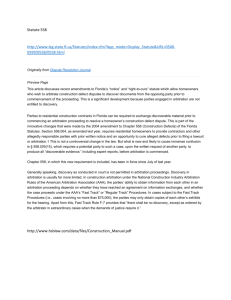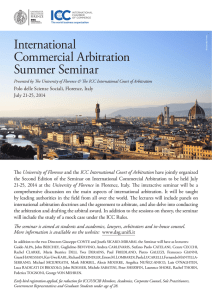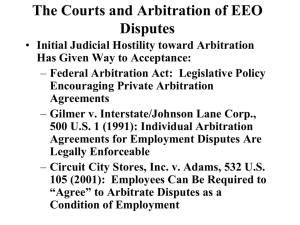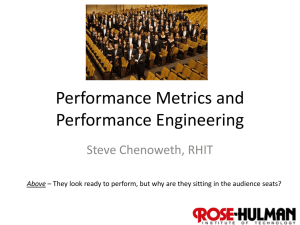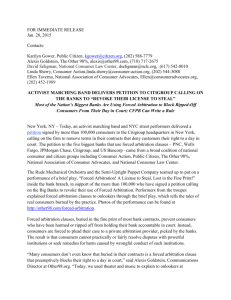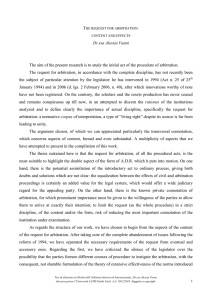Intro - METU Computer Engineering
advertisement
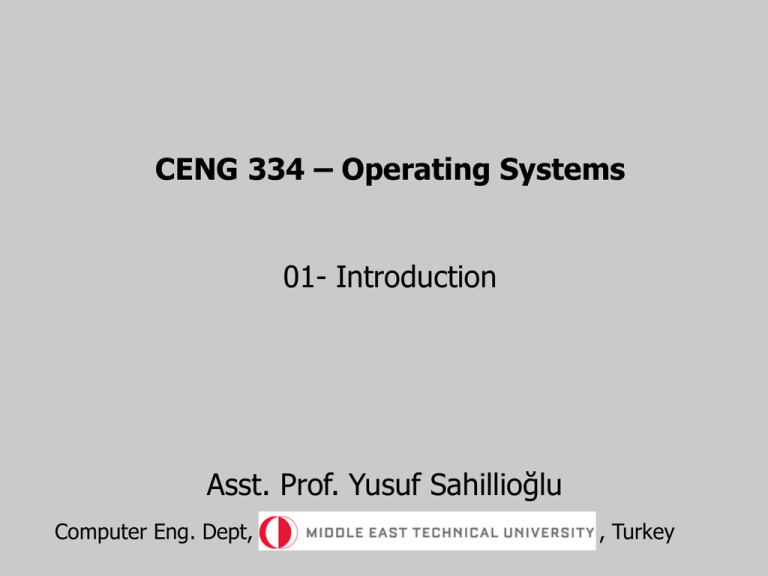
CENG 334 – Operating Systems 01- Introduction Asst. Prof. Yusuf Sahillioğlu Computer Eng. Dept, , Turkey Administrative 2 / 17 Tue 13:40-15:30 & Thu 16:40-17:30 @ BMB-4. www.ceng.metu.edu.tr/course/ceng334/ //official www.ceng.metu.edu.tr/~ys/ceng334-os/ //my lecture slides Grading 42%: 2 Midterm Exams, 21% each. 22%: Final Exam. 36%: 3 Assignments, 12% each. Textbook: Operating System Concepts: Textbook slides and Erol Sahin’s slides are used/modified when needed. Instructor: Yusuf Sahillioğlu (ys@ceng.metu.edu.tr) (office: B107) What’s an Operating System? 3 / 17 A program that acts as an intermediary between a user of a computer(ized device) and the computer(ized device) hardware. Objectives Abstraction – Hides details of different hardware configurations. Arbitration – Manages access to shared hardware resources. Abstraction 4 / 17 Apps do not have to be tailored for each possible device in the system. App: FM Computer1: Dell App: FM Computer2: Acer Abstraction 5 / 17 Apps do not have to be tailored for each possible device in the system. App: FM App: FM OS OS Computer1: Dell Computer2: Acer Abstraction 6 / 17 Apps communicate with OS through Libraries; so we only have to code according to the API of the library in use, e.g., OpenGL, Qt, STL. Arbitration 7 / 17 Multiple apps share the same hardware resources simultaneously (use hw efficiently). These managers of OS work together like a team to get jobs done. Arbitration 8 / 17 Memory manager. Allows allocation and deallocation of memory space. Arbitration 9 / 17 Process manager. Decides how to allocate the brain of the computer, the CPU. Arbitration 10 / 17 Device manager. Monitors every device connected to the system. Arbitration 11 / 17 File manager. Sets permissions so that certain users can only see certain files. What’s really going on under the hood? 12 / 17 a = a + 1; //C++ code 000000 00001 00010 00110 00000 100000 //compiled into machine code OS knows how to feed this into the CPU, may it be AMD or Intel. CPU performs the instruction when OS process manager permits. OS knows how to give the CPU output to the C++ code. Inside the case: What’s really going on under the hood? 13 / 17 Inside CPU: lots of transistors (semi-conductors). What’s really going on under the hood? 14 / 17 Abstraction or Arbitration? 15 / 17 Supporting both Intel and AMD processors. Switching between apps. Separating memory allocated to different apps. Enabling Skype to use different camera devices. Accessing two different hard disks. Multiple Operating Systems. 16 / 17 DOS/NT Unix-based (others: BSD, Solaris) Tablet devices made Unix-based OS as popular as Windows. Embedded systems: Android (embedded-linux). iOS (based on Apple’s Mac OS). Blackberry OS. Symbian (Samsung, Nokia). Multiple Operating Systems. 17 / 17 Linux: same unix-based kernel, different distributions. Ubuntu, Debian, Red Hat, Fedora, OpenSUSE, Slackware, Gentoo, etc. Kernel developed by undergrad Linus Torvalds (U of Helsinki, 91). Naming: Free, freak, x Freax vs. Linux (egostical).

